Ogrody Zamku Królewskiego w Warszawie
Royal Castle Gardens in Warsaw
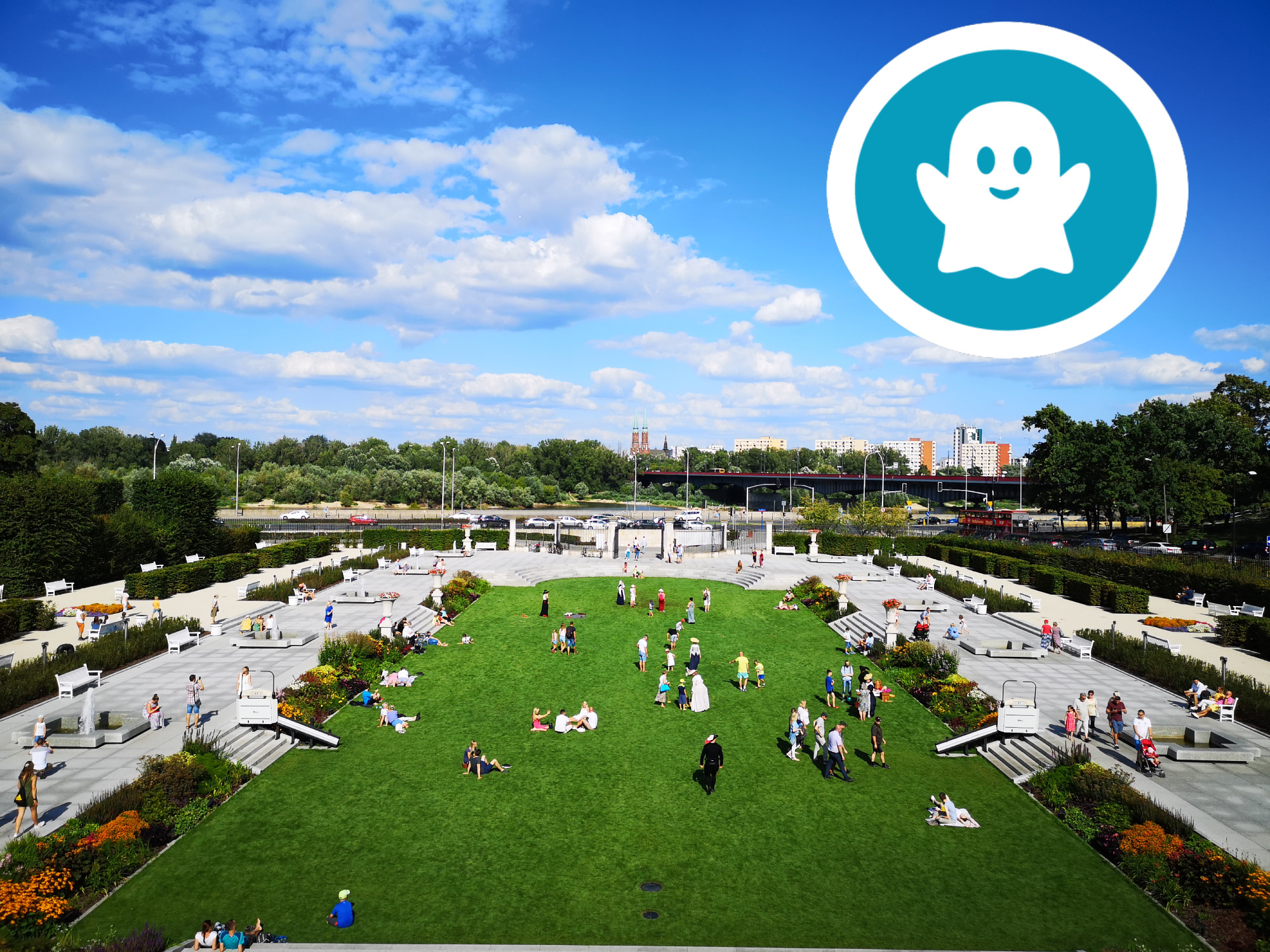
Poniższy opis został oparty na filmie autorstwa Radosława Gajdy i Natalii Szcześniak z kanału Architecture is a Good Idea, który serdecznie polecam :)
The following description is based on a video by Radosław Gajda and Natalia Szcześniak from the channel Architecture is a Good Idea, which I sincerely recommend :)
Pierwsze wzmianki o ogrodzie przy warszawskiej rezydencji książąt i królów pochodzą z XV w., ale to chyba dopiero teraz zamkowe ogrody prezentują się najpiękniej w swojej 500-letniej historii. Wyznaczyć można dwa główne powody, dla których przy rezydencjach lokalizowano niegdyś tereny zielone: po pierwsze, można było dzięki nim łatwo dostarczać na pański stół świeże warzywa, owoce i zioła. Po drugie, prawdopodobnie bardziej interesujące, ogrody miały funkcję reprezentacyjną - rozszerzenie komnat zamkowych, kolejne miejsce, do którego można było zaprosić gości czy dworzan. Ten drugi cel przyświecał architektom i ogrodnikom przez kilkadziesiąt lat pracy nad odtworzeniem Ogrodów Zamkowych, otwartych bardzo niedawno, bo 11 maja 2019 roku.
The first mention of the garden at the Warsaw residence of princes and kings dates back to the fifteenth century, but it is probably only now that the castle gardens present themselves most beautifully in their 500-year history. There are two main reasons why green areas used to be located at the residences: first of all, they made it easy to bring fresh vegetables, fruits and herbs to the table. Secondly, probably more interesting, the gardens had a representative function - they were an extension of the castle chambers, another place to which guests or courtiers could be invited. The latter was the goal of architects and gardeners for several decades of work on the reconstruction of the Castle Gardens, which were opened very recently, on 11 May 2019.
Taras górny: ornamenty i donice
Upper terrace: ornaments and planters

W rogu tarasu, w południowo-zachodniej części ogrodów, przy budynku biblioteki zamkowej, znajduje się quasi-barokowy ogródek, wyobrażenie tego, jak mógł wyglądać teren przyzamkowy za czasów dynastii Wazów (nie zachowały się żadne informacje, jak mógł on wyglądać w rzeczywistości). Można zobaczyć tutaj ornamenty z bukszpanu, dające wrażenie utkanych misternie koronkowych wzorów.
In the corner of the terrace, in the south-western part of the gardens, next to the castle library building, there is a quasi-baroque garden, an idea of what the chateau area might have looked like during the Vasa dynasty (no information about how it might have looked like in reality). Here you can see boxwood ornaments, giving the impression of intricately woven lace patterns.

Wzdłuż tarasu stoi szpaler drzew zasadzonych w donicach pomalowanych na kolory: zielony-czerwony-biały. Takie donice można było napotkać tu już w XVIII wieku - o czym wiemy z obrazu naczelnego malarza-archiwisty warszawskiego, Bernardo Bellotto, znanego jako Canaletto. Kolorystyka ta wzięła się od herbu Ciołek - czerwonego byka chodzącego po trawie na białym tle - herbu rodu Poniatowskich, wśród nich oczywiście naszego ostatniego króla, Stanisława Augusta Poniatowskiego.
Along the terrace there is a line of trees planted in planters painted green-red-white. Such planters could be found here as early as in the 18th century - as we know from a painting by Bernardo Bellotto, known as Canaletto, the chief painter-archivist of Warsaw. This colouring originated from the Ciołek coat of arms - a red bull walking on grass against a white background. It was the coat of arms of the Poniatowski family, including, of course, the last king of Poland, Stanisław August Poniatowski.

Ogród na Arkadach Kubickiego
Garden on the Kubicki Arcades
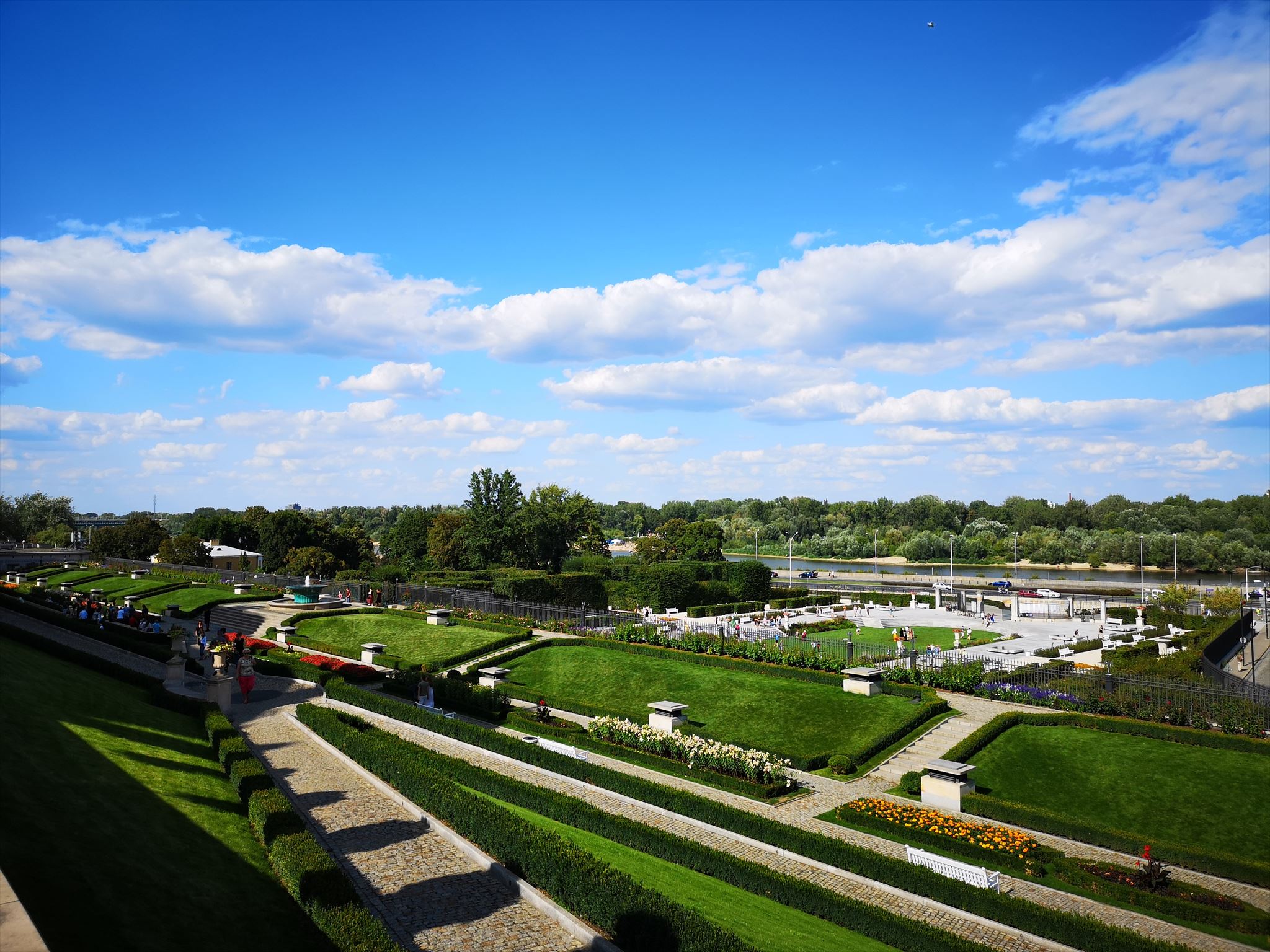
Różnica poziomów, która jest powodem podziału na Ogród Górny i Dolny, w gruncie rzeczy tłumaczy, czemu to właśnie tutaj postawiono Zamek - stroma skarpa tuż nad rzeką była znakomitą naturalną linią obrony. Niegdyś Wisła płynęła znacznie bliżej Zamku - król Poniatowski z myślą, a właściwie z imponującym planem na stworzenie ogrodów z prawdziwego zdarzenia rozkazał osuszyć znaczną połać terenu przy rzece, przesuwając koryto Wisły i tworząc podwaliny pod obecny Ogród Dolny. Planów tych jednak nie zdążył już zrealizować, ale od czasu do czasu wracano do nich przez następne 200 lat.
The difference in level, which is the reason for the division into the Upper and Lower Gardens, in fact explains why the castle was built here - a steep slope just above the river was an excellent natural defense line. Once the Vistula River flowed much closer to the Castle - King Poniatowski, with the thought, or rather with an impressive plan to create real gardens, ordered to drain a significant area of land by the river, moving the riverbed of the Vistula River and creating the foundations for the present Lower Garden. However, he did not manage to implement these plans in time, but from time to time they were returned to for the next 200 years.
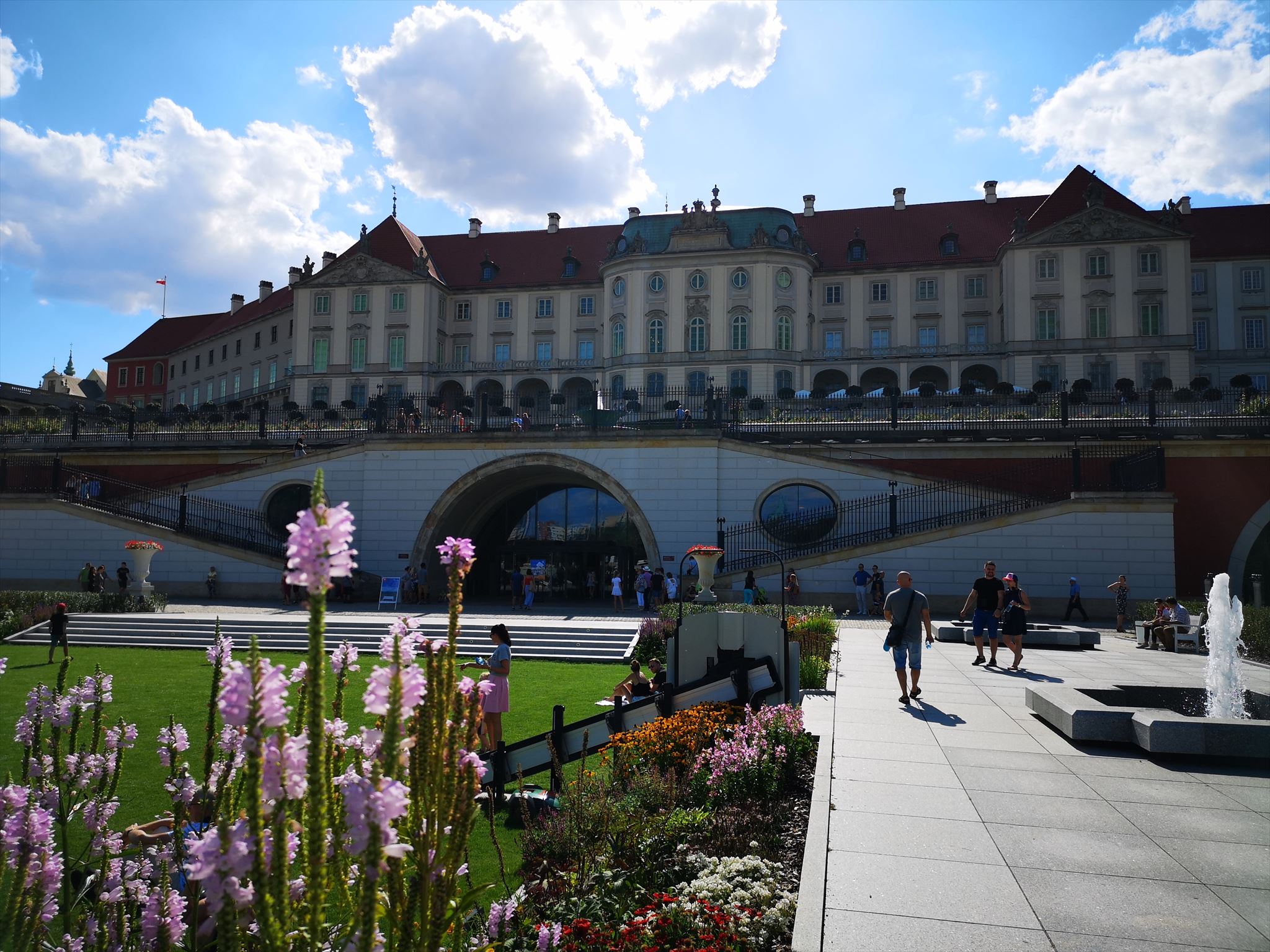
W trzeciej dekadzie XIX wieku wybudowano Arkady Kubickiego - ceglaną konstrukcję bazującą na masywnych ażurowych łukach, mieszczącą przestronną halę połączoną schodami z bryłą Zamku Królewskiego. Mimo zrównania z ziemią Zamku w czasie II wojny światowej, Arkady cudem przetrwały, jednak na renowację musiały poczekać do 1995 r., kiedy to zdecydowano się wzmocnić skarpę poprzez wstawienie w jej zbocze gigantycznej żelbetowej konstrukcji. Prace nad renowacją Arkad zakończyły się w 2009 r. Dziś ich odnowione zabytkowe wnętrza są miejscem organizacji licznych imprez – wystaw, koncertów, spektakli teatralnych czy imprez handlowych.
In the third decade of the 19th century, Kubicki Arcades were built - a brick construction based on massive openwork arches, housing a spacious hall connected by stairs with the body of the Royal Castle. Despite being razed to the ground during World War II, the Arcades miraculously survived, but had to wait for the renovation until 1995, when it was decided to strengthen the slope by inserting a gigantic reinforced concrete structure into its slope. Work on the renovation of the Arkady was completed in 2009. Today, their renovated historic interiors are the venue for numerous events - exhibitions, concerts, theatrical performances and trade events.
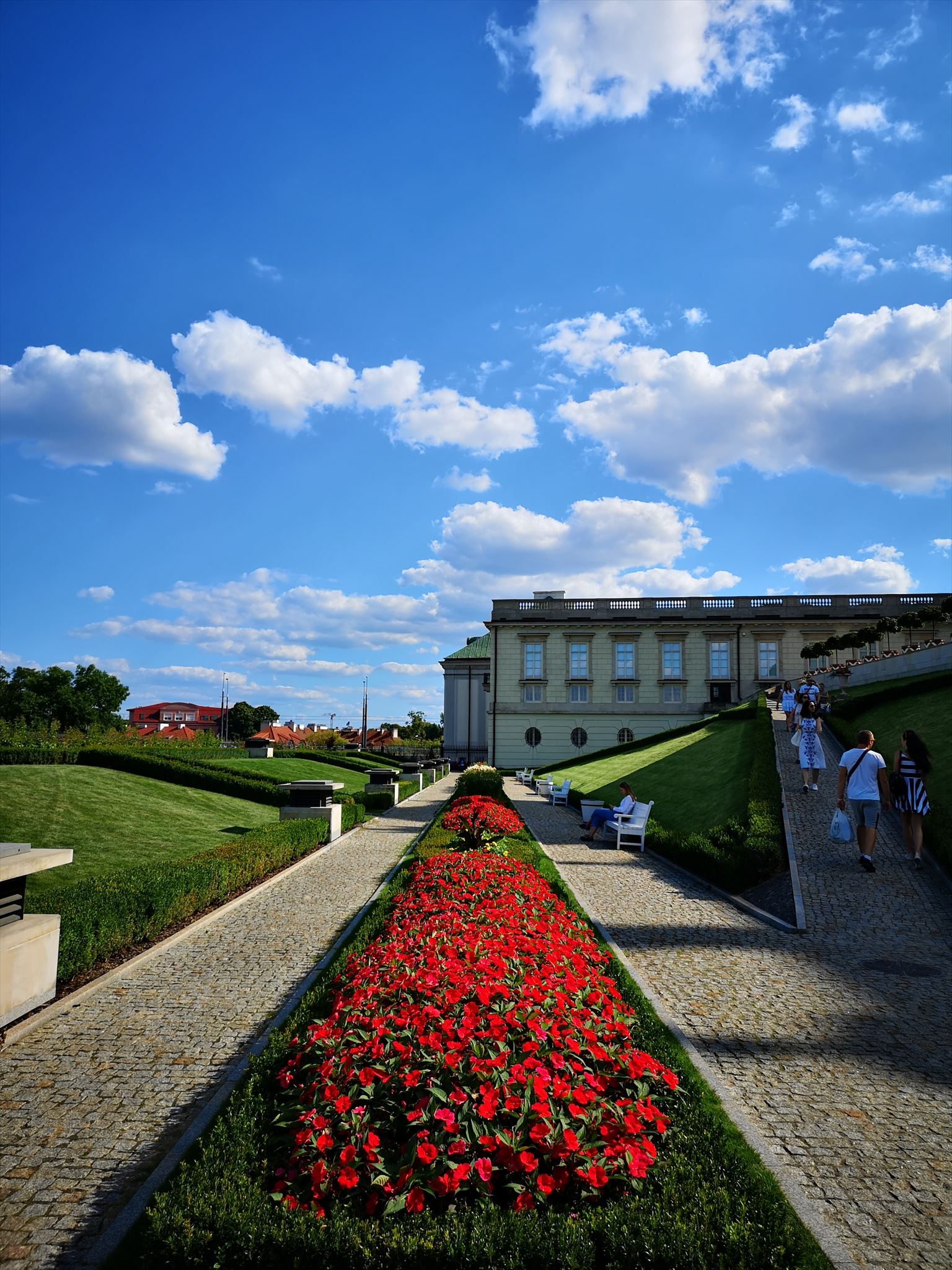
W Ogrodzie Górnym znaleźć można niezwykłą odmianę tulipanów o nazwie "Serce Warszawy". Jej wyhodowanie na plantacji pod Poznaniem zajęło 16 lat! Roślina osiąga nawet 65 cm wysokości, a jej czerwony kielich skrywa bardzo rzadko spotykane efektowne żółte znamię słupka - żółć i czerwień to rzecz jasna barwy Warszawy.
In the Upper Garden you can find an unusual variety of tulips called "Heart of Warsaw". It took 16 years to grow it on a plantation near Poznań! The plant grows up to 65 cm tall, and its red cup hides a very rare and impressive yellow pole - yellow and red are, of course, the colours of Warsaw.

Ogród dolny: labirynty i wgłębnik
Lower Garden: labyrinths and bowling green
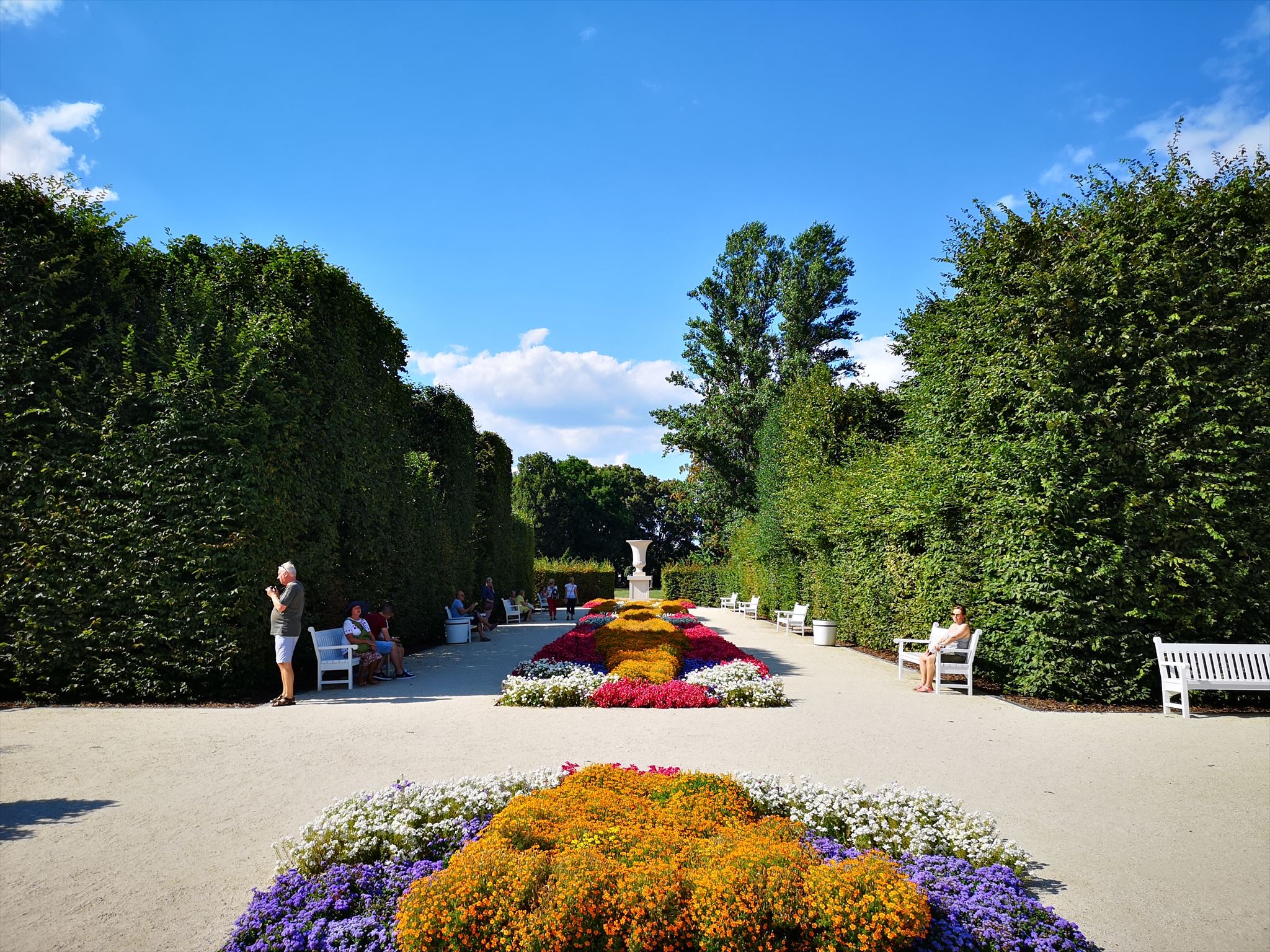
Pomysł zorganizowania ogrodu na osuszonych terenach powrócił w dwudziestoleciu międzywojennym. Zamek Królewski był wtedy siedzibą prezydentów Polski, w tym Ignacego Mościckiego, który był zwolennikiem idei monumentalnego, modernistycznego ogrodu z nawiązaniami do baroku i rokoka. Pod koniec lat 30. posadzono tu boskiety grabowe, czyli rzędy drzew o równo przystrzyżonych gałęziach, dające wrażenie ścieżki otoczonej zewsząd zielenią. Niestety tym razem plany o ogrodzie z prawdziwego zdarzenia pokrzyżowała wojna.
The idea of organizing a garden in dry areas came back in the interwar period. The Royal Castle was then the seat of Polish presidents, including Ignacy Moscicki, who supported the idea of a monumental modernist garden with references to Baroque and Rococo. At the end of the 1930s, bosquet hornbeam trees were planted here, i.e. rows of trees with evenly trimmed branches, giving the impression of a path surrounded by greenery everywhere. Unfortunately, this time the real plans for the garden were thwarted by the war.
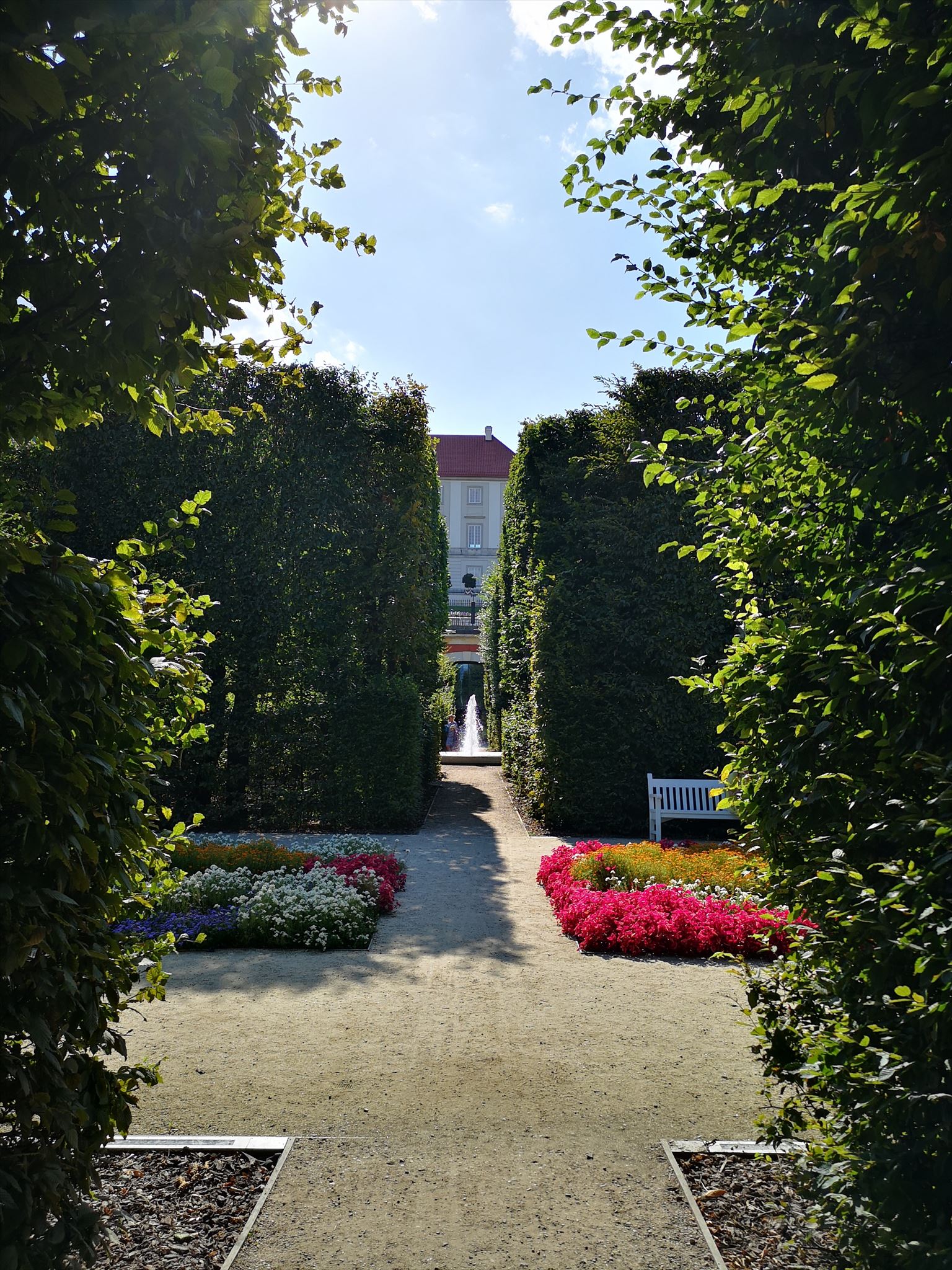
Po II wojnie światowej odnaleziono cudem ocalałe boskiety i pielęgnowano je z myślą o tym, co może z nich powstać. Od strony południowej wybudowano Trasę W-Z, co okroiło znacznie teren przeznaczony na ogród. U progu XXI wieku powrócono do zapomnianej w PRLu koncepcji, pojawiły się też środki unijne, które napędziły proces powstawania długo oczekiwanych terenów zielonych. Do grabów, które przetrwały do tego czasu, dosadzono nowe tak, by z boskietu powstał swego rodzaju labirynt, zapraszający nas do podążania jego ścieżkami.
After World War II, the surviving bosquets were miraculously found and cared for with a view to what could arise from them. On the south side, the East-West Route was built, which significantly reduced the garden area. At the beginning of the 21st century, the concept forgotten in the People's Republic of Poland was returned to, and there were also EU funds to fuel the process of creating long-awaited green areas. New ones were added to the hornbeams which survived until that time, so that a kind of labyrinth could be created from the bosquet, inviting us to follow its paths.

W centralnym punkcie ogrodu znajduje się wgłębnik - duży trawnik poniżej poziomu gruntu, nawiązujący do wzorców francuskich, takich jak ogród w Wersalu. To miejsce cieszy się największą popularnością wśród odwiedzających, zwłaszcza wśród dzieci. Odwiedzając Ogrody w niedzielę 11 sierpnia, trafiłem akurat na festiwal gier i zabaw dworskich, prowadzonych przez ubranych zgodnie z XVII- i XVIII-wieczną modą panów i panie - kilka zdjęć poniżej :)
In the centre of the garden there is an indentation (bowling green) - a large lawn below ground level, referring to French patterns such as the garden of Versailles. This place is most popular with visitors, especially children. While visiting the Gardens on Sunday, August 11th, I came across a festival of court games and games, run by men and ladies dressed in accordance with the seventeenth and eighteenth century fashion - I couldn't help but take some photos :)
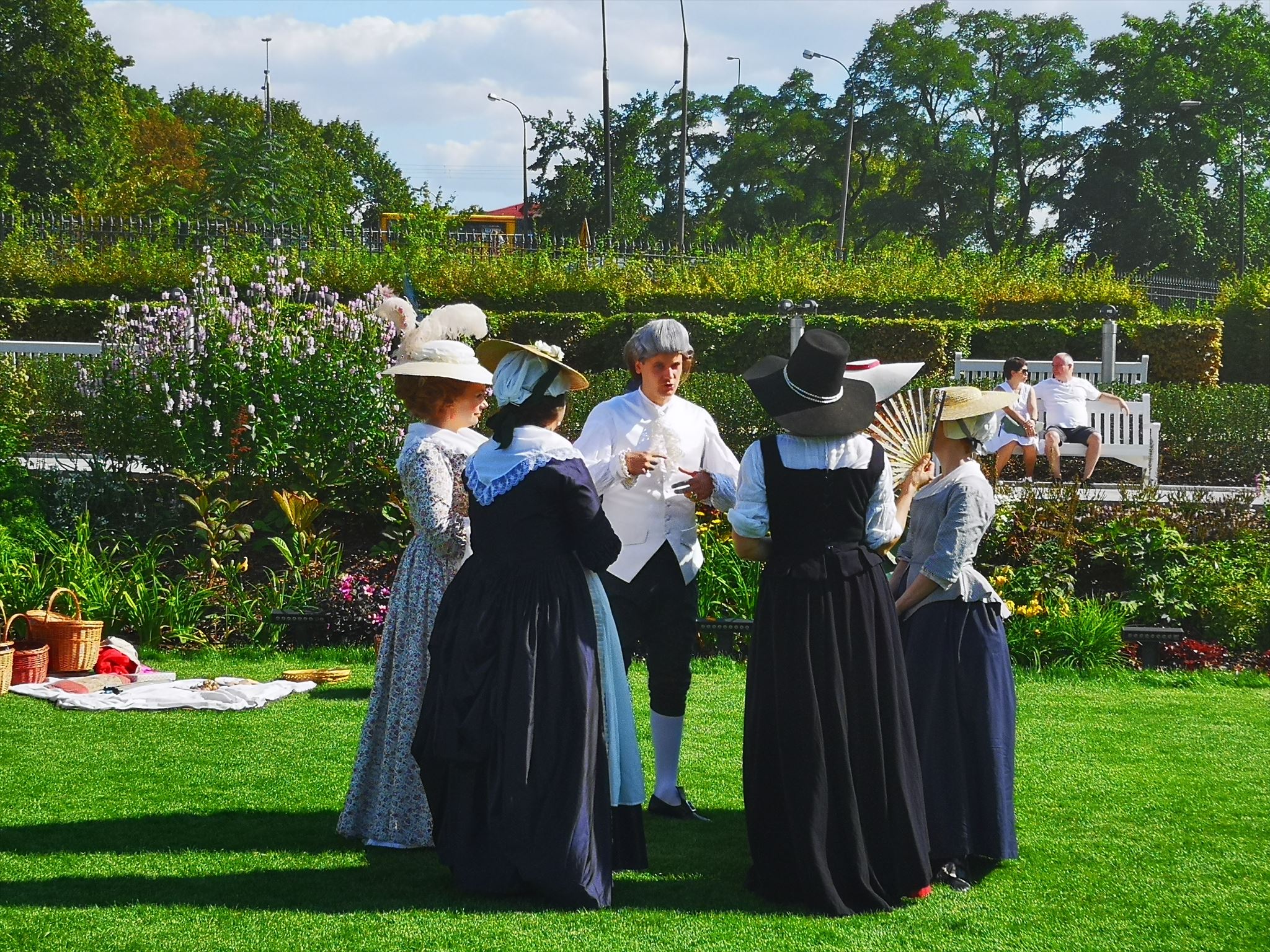
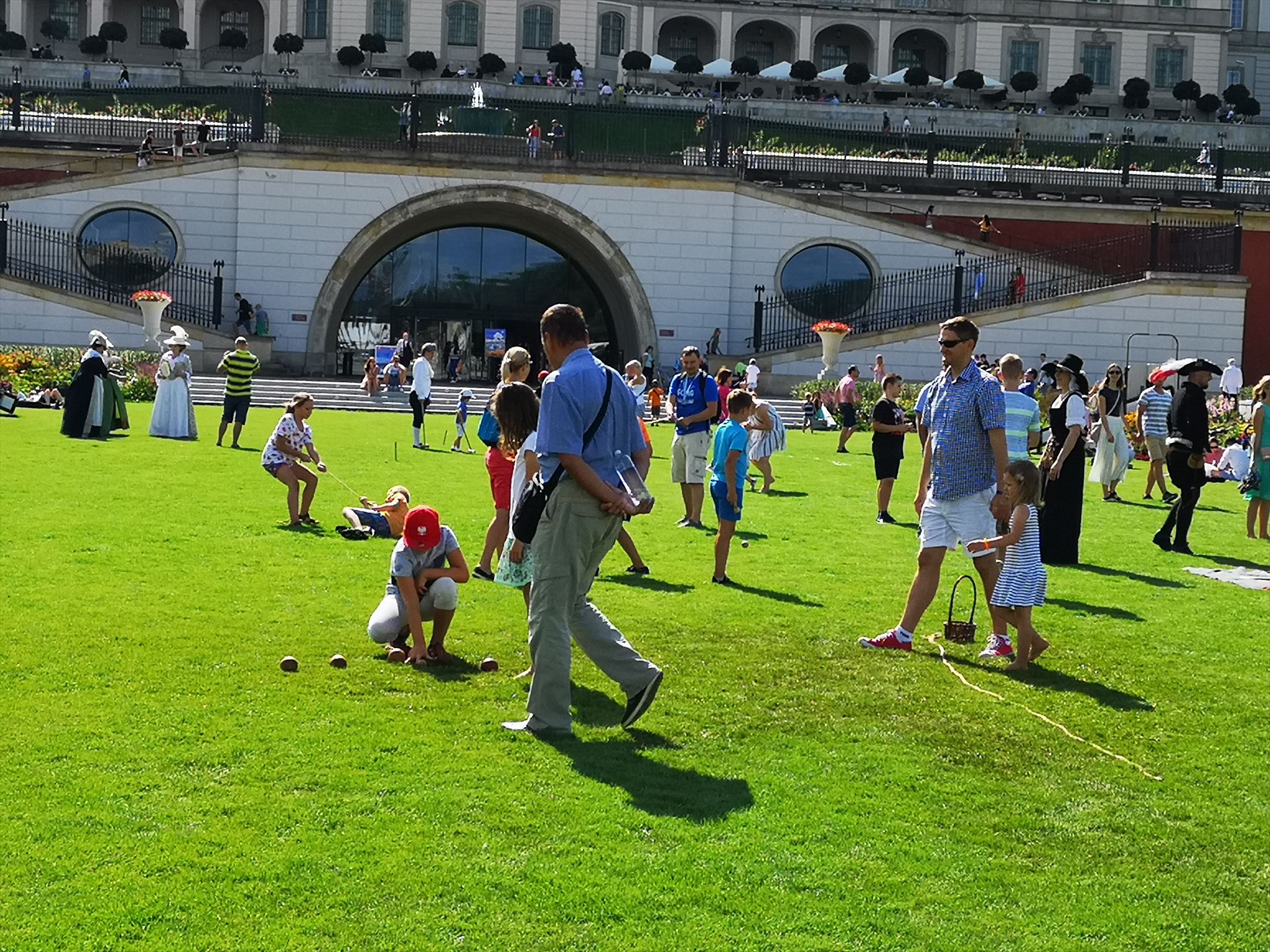
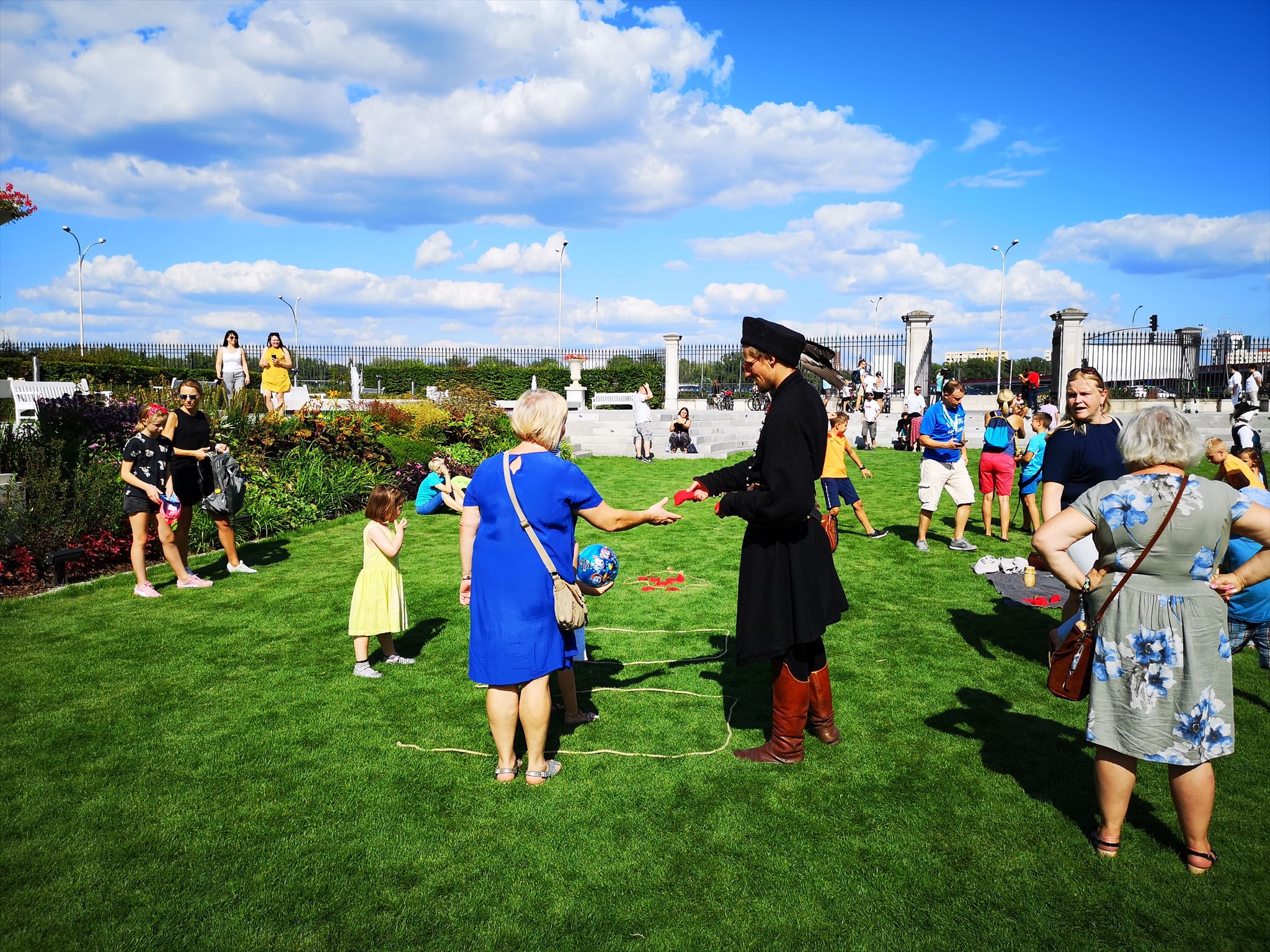
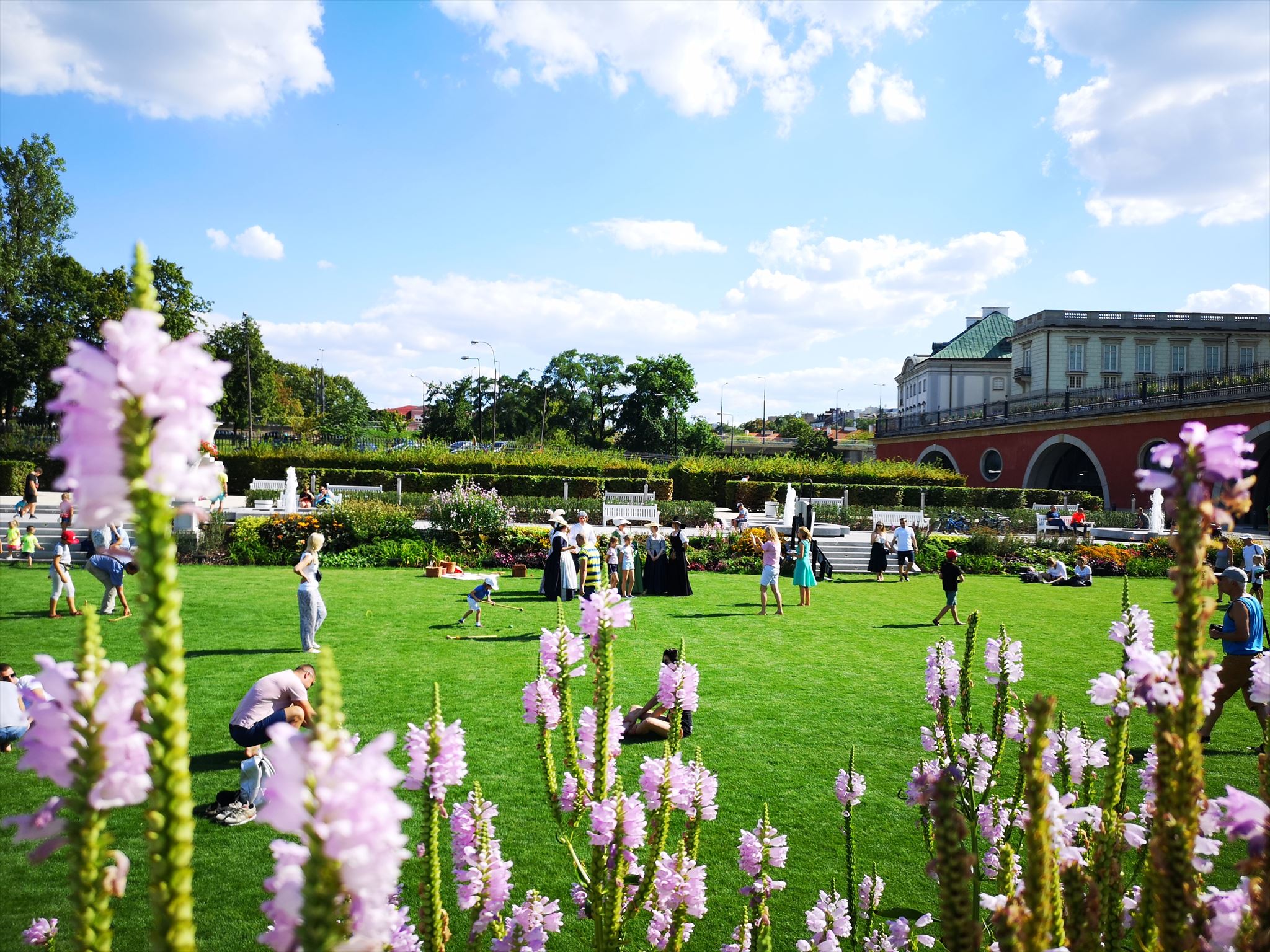
Twoje zadanie:
Nie sądzę, byś potrzebował/a szczególnej zachęty, by przejść się po Ogrodach, jednak mam dla Ciebie dwa zadania.
1. Stań na współrzędnych początkowych. Zrób stąd zdjęcie z Zamkiem Królewskim i czymś, co pozwoli określić, że to Ty jesteś autorem zdjęcia - tak więc może być to Twoja twarz lub inna część ciała, Twój drewniak, plecak, pieczątka, maskotka...
2. Poniżej są zdjęcia trzech charakterystycznych elementów Ogrodów, które znajdują się na południowy zachód, zachód i północny zachód od Ciebie - znajdź jedno z nich i zrób i załącz do loga zdjęcie z nim na tych samych zasadach, co powyżej. Powodzenia! 🌹🌹🌹
Ogrody otwarte są codziennie oprócz poniedziałków, w godzinach: w okresie letnim (od 2 maja do 30 września) od godziny 10 do 20 oraz w okresie zimowym (1 października - 30 kwietnia) od 10 do 18. Niestety, w okresie zimowym Ogród Górny jest nieczynny - oczywiście w tym czasie zadanie jest również możliwe do wykonania.
Your task:
I suppose there's no need of any further prompts for you to take a walk around the Gardens, nevertheless I have a task for you.
1. Stand on the posted coordinates. Take a picture of the facade of Royal Castle and something that belongs to you - your face or other body part, your geocoin, stamp, backpack, puppet...
2. Below you can see three characteristic points of the Gardens, which you can find going southwest, west and northwest from your position - choose one of them and take pictures of it and something of yours, as above (and add them to your log). Good luck! 🌷🌷🌷
The Gardens are open daily, except Mondays, from 10AM to 8PM in the summer season (May 2 - September 30) and from 10AM to 6PM in the winter season. Unfortunately, the Upper Garden is closed in the winter season - nevertheless you can still fulfill the task then :)
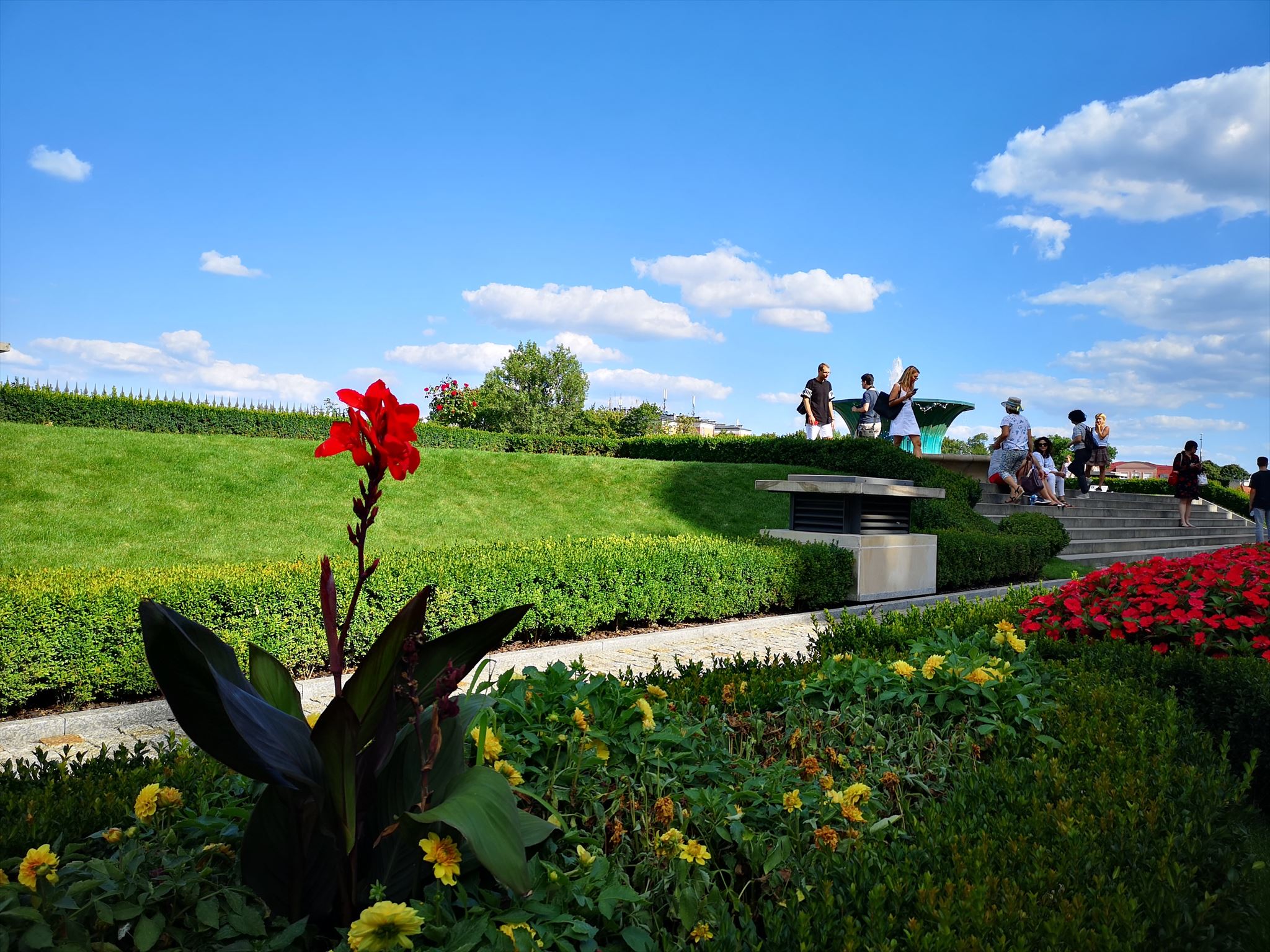
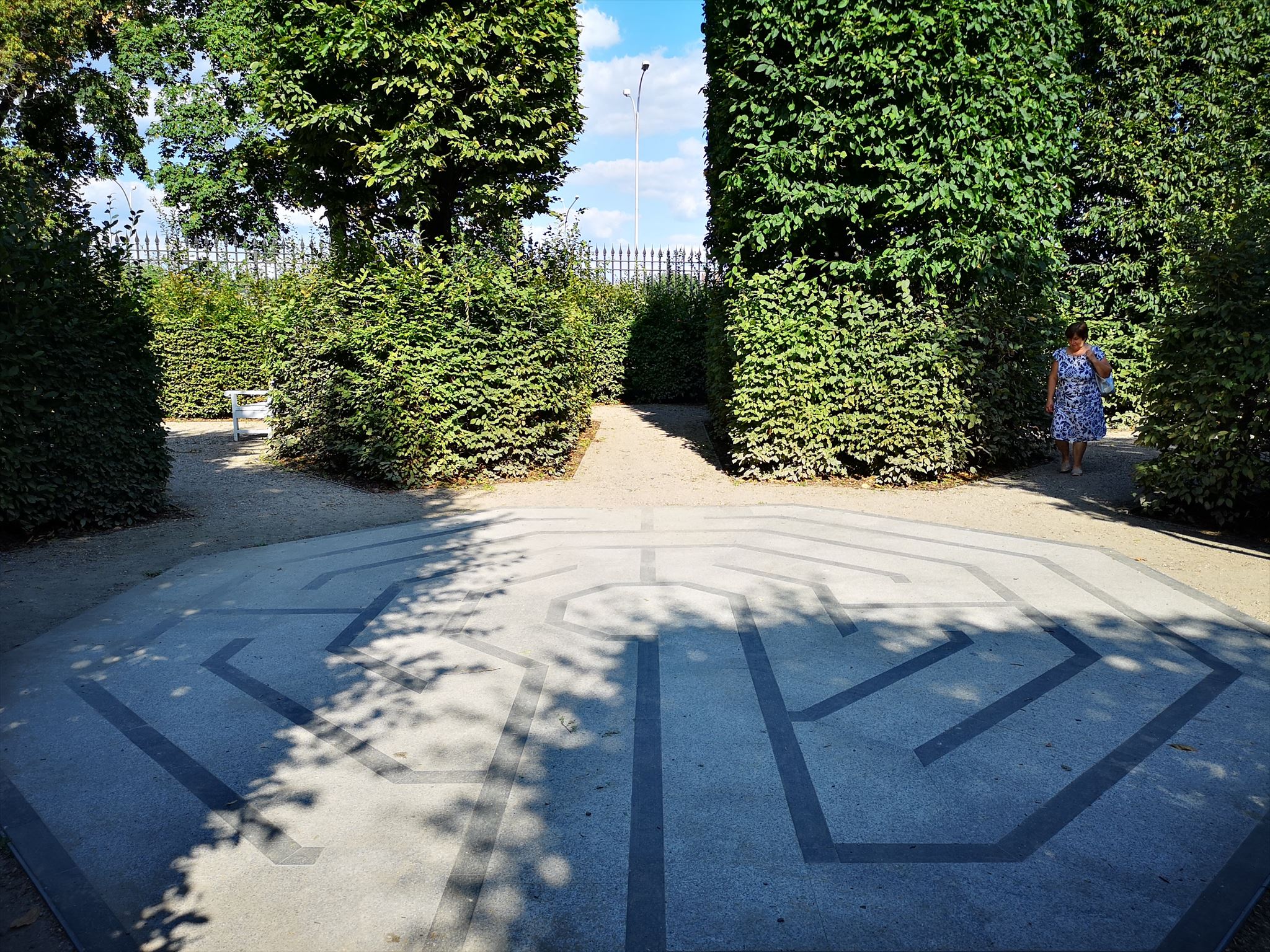
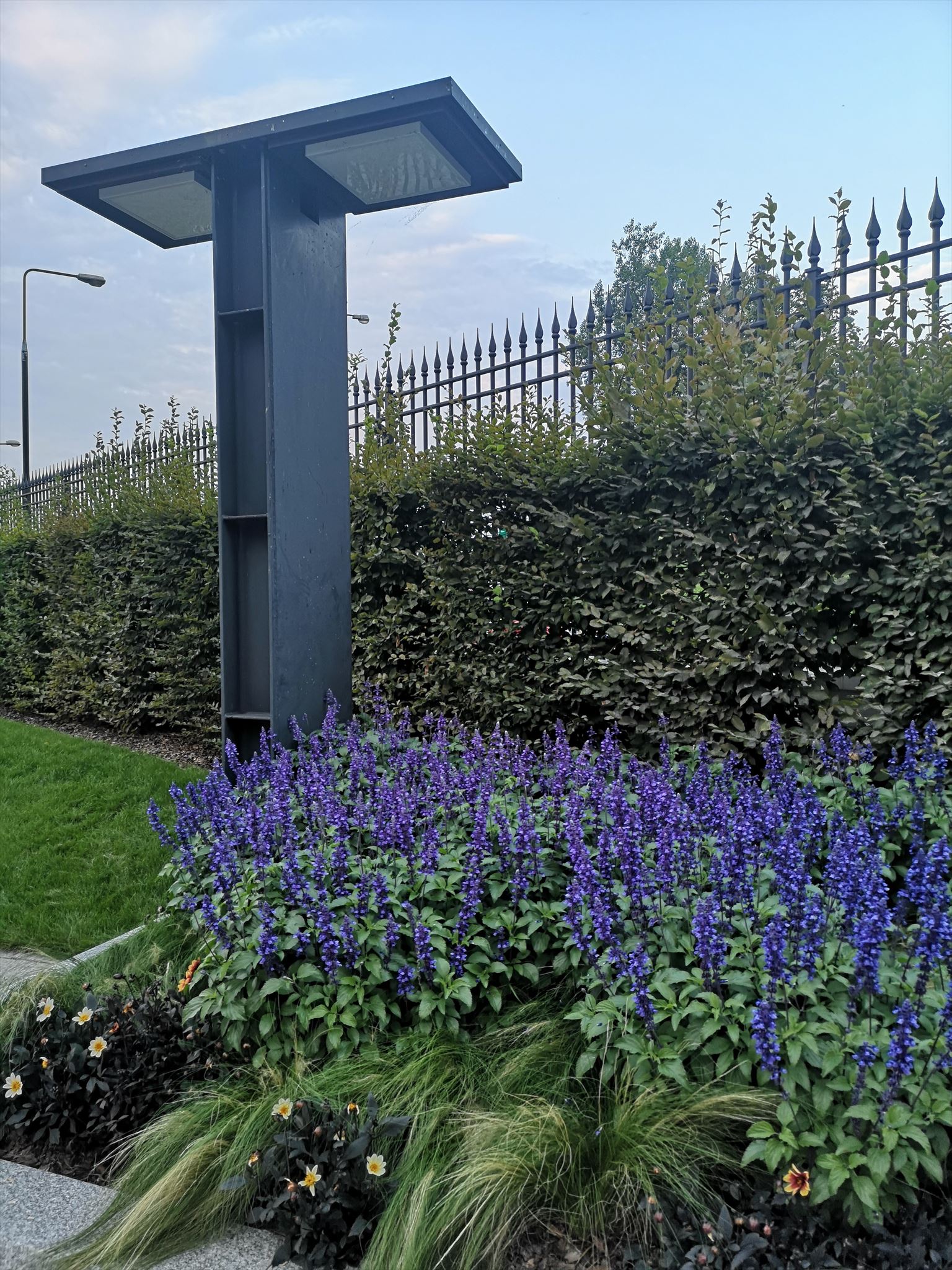
Virtual Rewards 2.0 - 2019/2020
This Virtual Cache is part of a limited release of Virtuals created between June 4, 2019 and June 4, 2020. Only 4,000 cache owners were given the opportunity to hide a Virtual Cache. Learn more about Virtual Rewards 2.0 on the Geocaching Blog.